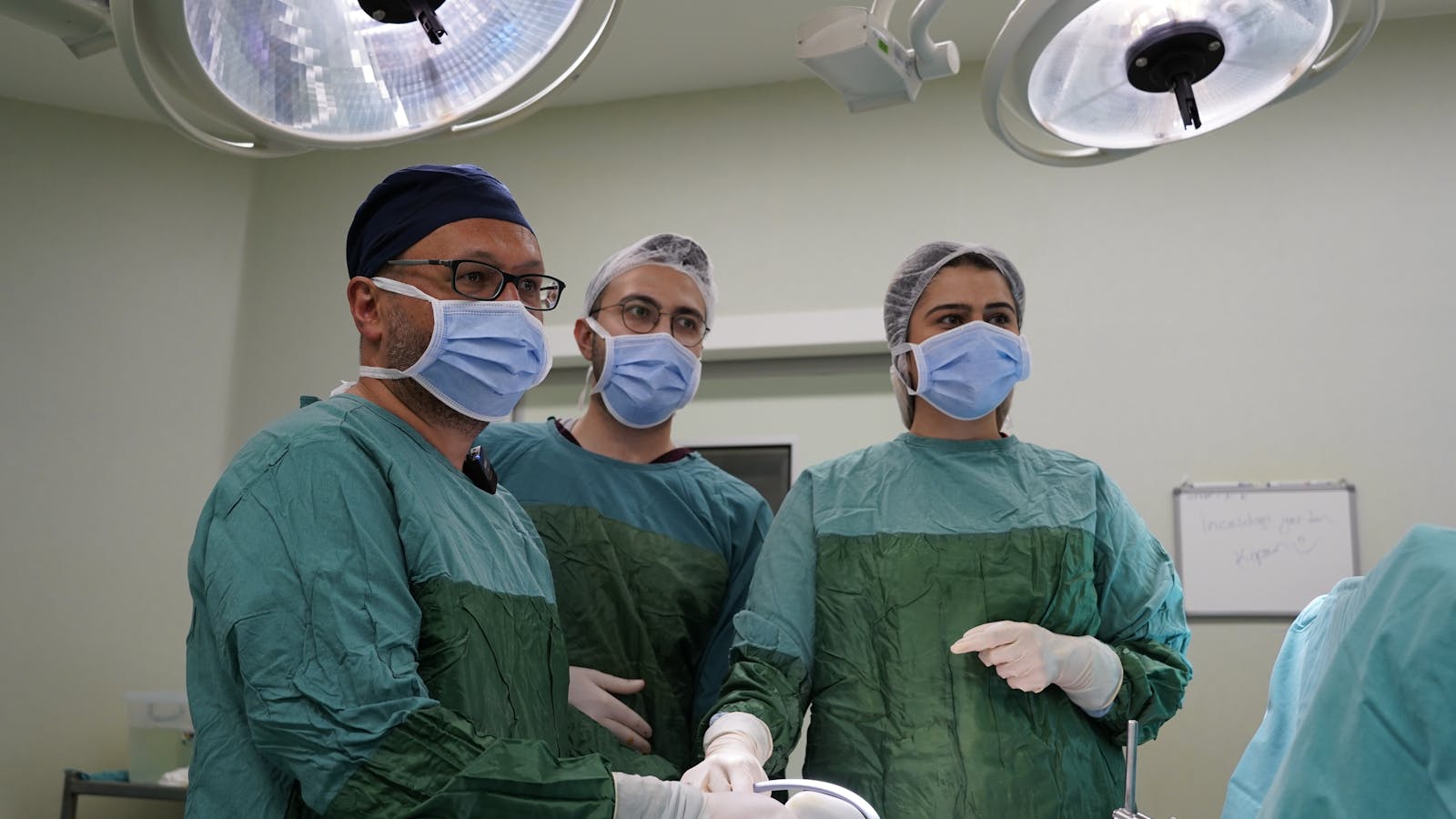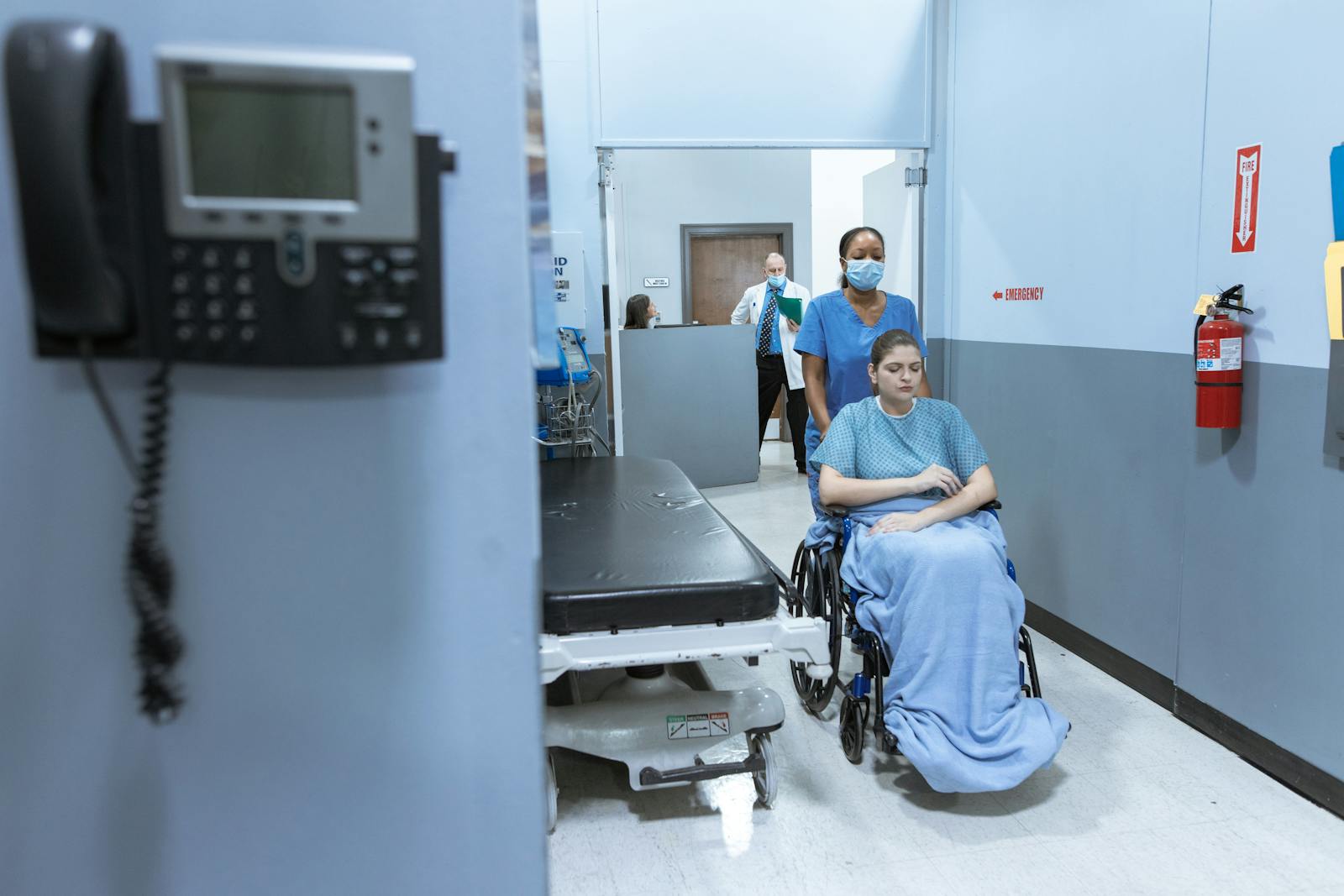As we explore the world of modern medical advancements, the safety of minimally invasive spine surgery emerges as a topic of significant interest. This surgical technique, while boasting benefits such as reduced recovery times and minimized tissue damage, also raises questions concerning its safety profile. As we weigh these benefits against potential risks, the question remains: how safe is minimally invasive spine surgery? The answer to this question may offer a new perspective on patient care and surgical innovation in the field of neurosurgery.
Understanding Minimally Invasive Spine Surgery
To fully understand the concept of minimally invasive spine surgery, it is essential to explore its fundamental principles, techniques, and the specific conditions it is designed to treat. This surgical approach primarily targets abnormalities within the spine’s structure, hence, a fundamental understanding of spine anatomy is paramount. The spine is a complex assembly of vertebrae, intervertebral discs, nerves, and supporting tissues. Anomalies in any of these components can lead to debilitating conditions like herniated discs, spinal stenosis, or sciatica, which may necessitate surgical intervention.
Minimally invasive spine surgery employs technologically advanced instruments and techniques to rectify these conditions with minimal disruption to the surrounding tissues. It offers advantages such as reduced blood loss, lower infection risk, and quicker recovery times. However, the success of this surgery is heavily reliant on meticulous preoperative care. A thorough evaluation of the patient’s health status, including assessment of cardiovascular risk, nutritional status, and any underlying comorbidities, is performed. Additionally, the patient’s understanding of the procedure, its potential benefits, and risks, as well as their commitment to postoperative rehabilitation, are vital for excellent surgical outcomes. Therefore, the importance of preoperative care cannot be overstated in the context of minimally invasive spine surgery.
Evolution of Spine Surgery Techniques
The evolution of spine surgery techniques has been a journey marked by significant advancements, transforming from traditional open surgeries to the contemporary minimally invasive procedures that prioritize patient safety and recovery. This transformation is largely attributable to the historical progression of medical knowledge and the evolution of surgical instruments, both of which have facilitated the shift towards less invasive methods.
In the early days of spine surgery, procedures were inherently risky, with high morbidity and mortality rates. This was largely due to the rudimentary surgical instruments available at the time, coupled with limited understanding of the spine’s complex anatomy. As medical knowledge expanded, so did the development and refinement of surgical instruments, leading to safer and more effective intervention techniques.
The advent of technology, particularly imaging modalities such as MRI and CT scans, revolutionized spine surgery. These advances allowed for precise visualization of the spine, enabling surgeons to perform delicate procedures with minimal tissue disruption. Simultaneously, the evolution of surgical instruments, such as endoscopes and microsurgical tools, facilitated precise and controlled manipulation of spinal structures. This fusion of advanced technology and refined surgical techniques culminated in the emergence of minimally invasive spine surgery.
Key Benefits of Minimally Invasive Procedure
Building upon the evolution of spine surgery techniques, minimally invasive procedures offer a multitude of benefits that greatly enhance patient outcomes. The key benefits are manifold and include reduced recovery time, minimized tissue disruption, less blood loss, and decreased post-operative pain. These advantages lead directly to shorter hospital stays, leading to increased cost efficiency.
Cost efficiency is an important factor when evaluating surgical procedures. Minimally invasive spine surgery, due to its lower complication rates and faster recovery times, often results in lower overall healthcare costs. This is not only beneficial for patients but also has implications for the larger healthcare system as it can lead to better allocation of resources.
Insurance coverage for spine surgeries can often be a concern for patients. However, due to the recognized benefits and cost efficiency, many insurance companies now cover minimally invasive procedures. This is a significant advantage for patients, easing their financial burden and making this advanced surgical option more accessible.
Risks Associated With Traditional Spine Surgery
While minimally invasive procedures are gaining popularity, it is important to understand the potential risks associated with traditional spine surgery, which can be considerably more invasive and complex.
One prominent risk factor is associated with spinal fusion concerns. Spinal fusion, a common procedure in traditional spine surgery, aims to alleviate back pain by permanently joining two or more vertebrae in the spine. However, this can result in decreased spinal flexibility, prolonged recovery time, and potential requirement for additional surgeries, if the fusion doesn’t heal as planned or if it puts stress on the vertebrae above and below the fusion site.
Another critical risk stems from the use of anesthesia. Anesthesia risks can be significant in traditional spine surgery, especially for elderly patients or those with existing health conditions. These risks can include, but are not limited to, allergic reactions, breathing problems, and even heart complications.
Furthermore, traditional spine surgery also carries the inherent risks of infection, substantial blood loss, nerve damage leading to weakness or paralysis, and chronic pain. It is, hence, important for patients and medical professionals to weigh these potential risks against the benefits before opting for traditional spine surgery.

Potential Complications in Minimally Invasive Surgery
Despite its numerous advantages, does minimally invasive spine surgery come without potential complications? The answer is no. It is important to understand that every surgical procedure carries some level of risk, and minimally invasive spine surgery is no exception.
Here are some potential complications that could occur:
– Infection: Though much less than traditional surgery, there remains a small chance of infection.
– Bleeding: Minimal but present, particularly if the patient has clotting disorders.
– Nerve damage: There is a small risk of nerve damage during the procedure.
– Anesthesia complications: As with any surgery, there can be adverse reactions to anesthesia.
– Failure to relieve symptoms: In some cases, the surgery might not alleviate the patient’s symptoms.
Given these potential complications, the cost-effectiveness of surgery, and the importance of patient counseling become even more pronounced. It is essential to thoroughly communicate potential risks to patients, helping them make informed decisions. While minimally invasive spine surgery offers numerous benefits, including quicker recovery times and reduced hospital stays, it also carries potential complications that must be considered.
Role of Technological Advancements in Safety
Undoubtedly, technological advancements have played a crucial role in enhancing the safety of minimally invasive spine surgery. With the advent of robotic assistance and artificial intelligence, surgeons can now perform intricate procedures with unprecedented precision, reducing the risk of surgical errors that could lead to complications.
Robotic assistance provides surgeons with superior visualization, increased dexterity, and improved ergonomics. The advanced 3D imaging techniques allow for precise navigation during surgery, minimizing the potential for damage to the surrounding tissues. This precise targeting notably reduces the risk of post-operative complications and enhances patient recovery time.
Artificial intelligence, on the other hand, enhances safety by predicting potential surgical risks and outcomes. AI algorithms can analyze a patient’s medical history and preoperative imaging to identify potential complications, thereby allowing for personalized surgical planning.
Additionally, AI can offer real-time guidance during surgery, further enhancing the accuracy of the procedure. Machine learning algorithms can also be used postoperatively for patient monitoring, identifying signs of complications early and facilitating swift intervention.
Therefore, through robotic assistance and artificial intelligence, safety in minimally invasive spine surgery has been significantly augmented. Technological advancements continue to revolutionize this field, promising a future with even safer procedures.
Patient Testimonials About Minimally Invasive Surgery
Reflecting on the tangible benefits of technological advancements in minimally invasive spine surgery, numerous patients have shared their experiences, offering valuable insights into the real-world impact of these procedures. These patient experiences, particularly detailing the surgery aftermath, provide a compelling perspective on the overall safety and effectiveness of these innovative procedures.
A quick summary of their testimonials reveals:
- Many patients reported a significant reduction in post-surgery discomfort, compared to traditional spine surgery.
- Recovery times were often considerably shorter, enabling patients to resume regular activities more quickly.
- A number of patients expressed satisfaction with the minor scarring resulting from the minimal incisions.
- Several testimonials highlighted the lower risk of infection and complications.
- A common theme was the improvement in quality of life following the surgery, attributed to successful pain management.
These patient experiences suggest that minimally invasive spine surgery has a high safety profile and favorable outcomes. However, it’s important to remember that individual results can vary. Hence, potential patients should thoroughly discuss the benefits and risks with their healthcare provider, to make an informed decision about their treatment options.
Surgeon’s Perspective on Safety
From a surgeon’s viewpoint, the safety measures implemented for minimally invasive spine surgery are of paramount importance and are carefully assessed to guarantee excellent patient outcomes. A surgeon’s skillset plays a critical role in ensuring these safety measures are effectively executed. These include precise knowledge of the spine’s anatomy, proficiency in the use of specialized tools and equipment, and adeptness in executing the surgical procedure with minimal incisions.
Safety, however, is not the sole responsibility of the surgeon. The entire medical team contributes to ensuring the patient’s comfort and safety. Anesthesiologists administer appropriate levels of anesthesia to the patient, while nursing staff monitor vital signs throughout the operation. Post-operative care is also essential in maintaining patient comfort, as it helps prevent complications and promotes quicker recovery.
Furthermore, the surgeon’s perspective on safety extends to the patient’s pre-operative state. A detailed assessment of the patient’s overall health, any existing comorbidities, and their ability to tolerate the surgery is conducted. To summarize, from a surgeon’s perspective, the safety of minimally invasive spine surgery is a multifaceted issue, involving their skillset, the medical team’s cooperation, and the patient’s health status and comfort.

Comparing Recovery Times: Traditional Vs. Minimally Invasive
When it comes to spine surgery, the recovery time plays a significant role in deciding between traditional and minimally invasive procedures, with the latter often boasting shorter recovery periods. Minimally invasive surgery involves smaller incisions, reduced muscle damage, and lesser blood loss, contributing to quicker healing and rehabilitation compared to traditional open surgery.
Post surgery mobility is an important factor for patients. With traditional surgery, patients may be bedridden or have limited mobility for weeks or even months. However, minimally invasive surgery often allows patients to begin walking much sooner, sometimes within hours of the operation.
Insurance coverage also plays a part in the decision-making process. While both types of procedures are generally covered, the shorter hospital stay and quicker return to daily activities associated with minimally invasive surgery may result in lower overall costs.
Here are some key points to take into account:
- Smaller incisions lead to less tissue damage in minimally invasive surgery
- Quicker post surgery mobility with minimally invasive procedures
- Reduced blood loss with minimally invasive spine surgery
- Shorter hospital stays and quicker return to work or daily activities
- Potential for lower overall costs due to quicker recovery times.
Case Studies Supporting Minimally Invasive Safety
Numerous case studies provide substantial evidence to bolster the safety of minimally invasive spine surgery. These studies highlight the impressive surgical success rates and demonstrate a notable reduction in postoperative complications compared to traditional methods. This data is essential for understanding the inherent safety and efficacy of minimally invasive spine surgery techniques.
Proven Surgical Success Rates
Highlighting the efficacy of minimally invasive spine surgery, a myriad of case studies have demonstrated high surgical success rates, thereby affirming its safety profile. These cases not only highlight the success of the surgery itself but also the positive impact it has on post-surgery lifestyle. Insurance coverage, as well, often coincides with these procedures due to their high success rates and proven safety.
- Many patients are able to resume their regular activities sooner due to less recovery time.
- Post-surgery lifestyle is typically improved as a result of less pain and increased mobility.
- Insurance coverage generally includes minimally invasive procedures due to their proven safety and effectiveness.
- High surgical success rates suggest lower chances of repeat procedures.
- Patient satisfaction rates are often high due to less invasive procedures and faster recovery times.
Reduced Postoperative Complications
In addition to the high success rates, minimally invasive spine surgery is also associated with a significant reduction in postoperative complications, as evidenced by a multitude of scientific case studies. These studies highlight the importance of pain management strategies and the rehabilitation process post-surgery. Minimally invasive procedures typically result in less blood loss, shorter hospital stays, and reduced reliance on pain medications, all of which contribute to a smoother recovery process. The significance of effective pain management strategies cannot be overstated; they play a vital role in reducing discomfort and accelerating recovery. Moreover, the rehabilitation process following minimally invasive procedures is often less strenuous, allowing patients to return to normal activities more swiftly.
Ongoing Research About Spine Surgery Safety
Ongoing research in the field of spine surgery continually assesses the safety and efficiency of minimally invasive procedures. This research offers in-depth insight into the risks associated with these surgeries, and the potential mitigating factors. Additionally, advancements in surgical procedures, driven by technological progression and increased understanding of spinal anatomy, are continually monitored and evaluated for their impact on patient safety.
Spine Surgery Safety Studies
While the safety of minimally invasive spine surgery continues to be a subject of extensive research, recent studies have provided promising insights into its risk factors and potential benefits. Emphasis on safety regulations and patient counseling has been pivotal in ensuring the success and safety of these procedures.
In-depth studies have highlighted key areas including: – The importance of patient counseling in managing expectations and understanding of the procedure – The role of safety regulations in reducing procedural risk – The impact of surgeon expertise and experience on the outcome – The necessity of appropriate patient selection for minimally invasive procedures – The influence of innovative technologies and techniques on the safety and effectiveness of surgery
These findings underscore the ongoing commitment to safety in minimally invasive spine surgery.
Risks of Spine Surgery
Despite the promising advancements in minimally invasive spine surgery, it is important to acknowledge the potential risks associated with these procedures, a topic that continues to be at the forefront of ongoing research. Surgical complications, although rare, can include infection, nerve damage, and issues with anesthesia. More research is required to quantify these risks and develop surgical alternatives to minimize them. In light of this, patient counseling becomes essential. It guarantees patients are fully aware of possible outcomes and can make informed decisions about their treatment options. By understanding the risks of spine surgery, researchers can continue to improve surgical procedures, and clinicians can provide detailed, precise information to their patients, enhancing the overall safety and efficacy of spine surgery.
Advancements in Surgical Procedures
In the quest to mitigate the associated risks of spine surgery, researchers are persistently working on innovations and advancements in surgical procedures, with a particular focus on the safety of minimally invasive techniques. Particularly, two areas have seen significant developments: surgical robotics advancements and biocompatible materials development.
- Surgical robotics advancements: The use of robotics in spine surgery allows for improved accuracy, less tissue damage, and reduced recovery time.
- Biocompatible materials development: New materials are being researched that can mimic the natural properties of spinal tissues, reducing the risk of rejection and enhancing the healing process.
- Enhanced imaging techniques: These offer surgeons a clearer view of the surgical site, improving the safety and success of the operation.
- Precision tools: These allow for more accurate surgical procedures, reducing the risk of collateral damage.
- Training and education: Ongoing research and development in these areas make sure surgeons are constantly updated on the latest techniques and safety measures.
Making an Informed Decision About Spine Surgery
To make an informed decision about spine surgery, it is essential to understand the potential benefits and risks, including the safety implications of minimally invasive procedures. The decision-making process should involve a thorough discussion with your healthcare provider about the specifics of your condition, the necessity of the procedure, and available surgery alternatives.
Minimally invasive spine surgery, compared to traditional open surgery, often boasts a lower risk of complications, shorter hospital stays, and quicker recovery times. However, it may not be suitable for everyone. Comprehending the nuances of your diagnosis and the complexities of the proposed surgical approach is vital.
Surgery alternatives, such as physical therapy, pain management techniques, and lifestyle modifications, may be viable options depending on the severity and nature of your spinal condition. Weighing these options against the potential benefits of surgery is an integral part of the decision-making process.
Frequently Asked Questions
What Is the Average Cost of Minimally Invasive Spine Surgery?
The average cost of minimally invasive spine surgery can vary greatly based on insurance coverage, geographical location, surgeon expertise, and the extent of post-operative care required, leading to a range of $15,000 to $50,000.
Are There Age Restrictions for Undergoing Minimally Invasive Spine Surgery?
Age does impact recovery from minimally invasive spine surgery. However, no specific age restrictions exist. The patient’s overall health and ability to meet pre-surgery requirements are more critical factors in determining surgical suitability.
How Long Does It Take to Return to Normal Activities After the Surgery?
The timeline to return to normal activities post minimally invasive spine surgery varies. It depends largely on the individual’s post-operative mobility and the efficiency of their rehabilitation process, typically ranging from a few weeks to several months.
Can Minimally Invasive Spine Surgery Correct All Types of Spinal Issues?
Minimally invasive spine surgery can address a variety of spinal issues. However, individual recovery experiences and potential surgical complications vary. Not all conditions are suitable for this method, requiring case-by-case evaluation by a spine specialist.
What Lifestyle Changes Are Recommended After Minimally Invasive Spine Surgery?
Post minimally invasive spine surgery, it’s essential to adopt certain lifestyle changes, including dietary adjustments for excellent nutrition and engaging in prescribed physical therapies, to facilitate a swift and effective recovery process.

